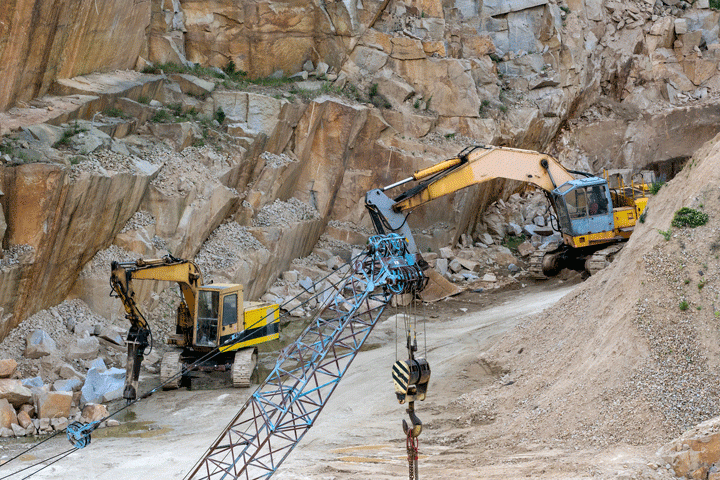Opening Natural Prizes: Granite Quarries in South Africa Introduced
Opening Natural Prizes: Granite Quarries in South Africa Introduced
Blog Article
Unearthing the Rich History and Lasting Practices of Granite Quarrying
As we stand on the precipice of revealing the complex tapestry of granite quarrying, a journey through time exposes not just the physical act of removing stone however likewise the social and historical significance woven right into the extremely textile of this practice. From the ancient beginnings that laid the structure for modern quarrying techniques to the lasting techniques that are forming the future of this market, each carve mark on granite surfaces narrates waiting to be uncovered (granite quarries in south africa). The legacy of granite quarrying stretches much past mere extraction; it is a testament to human resourcefulness, strength, and the long-lasting attraction of this impressive rock
Ancient Beginnings of Granite Quarrying
Going back to ancient human beings, the practice of quarrying granite has been an indispensable component of human history and architectural advancement. The earliest proof of granite quarrying days back to old Egypt, where large pyramids and detailed sculptures were crafted from this durable rock. The Egyptians made use of primitive tools to remove granite blocks from quarries, showcasing the importance of this material in their huge buildings.
Moving onward in background, the Greeks also made significant contributions to the quarrying of granite. The Greeks used granite in different architectural wonders, such as holy places and statuaries, demonstrating their ability in shaping and sculpting this durable rock. The Romans further refined the techniques of quarrying granite, using advanced tools like blades and hammers to extract and shape granite for their iconic frameworks.
Via the centuries, the technique of quarrying granite has actually advanced, with modern-day technologies improving efficiency while maintaining the classic allure of this natural stone - granite quarries in south africa. From ancient civilizations to modern builders, the legacy of granite quarrying remains to form our world
Advancement of Quarrying Techniques
The advancement of quarrying methods has been noted by a continual progression in the direction of better effectiveness and precision in removing granite. From the simple techniques used by our ancestors to the advanced technologies made use of in contemporary quarrying operations, the sector has actually gone through substantial innovations. Early quarrying methods involved hands-on labor with standard devices such as chisels, hammers, and wedges to draw out granite blocks from the earth. As human beings advanced, techniques like fire-setting and primitive nitroglycerins were introduced to promote the extraction procedure.
In more current times, the introduction of machinery changed the quarrying industry, enabling faster removal prices and enhanced performance. Technologies such as ruby cord saws, high-pressure water jets, and pneumatically-driven drills have ended up being common in contemporary quarries, permitting for precise cutting and reduced waste. Developments in computer-controlled equipment and 3D modeling have enhanced quarrying procedures, leading to marginal ecological influence and improved sustainability techniques. As the demand for granite remains to increase, the advancement of quarrying techniques continues to be essential to meeting industry requires efficiently and sustainably.
Cultural Relevance of Granite
Granite holds an extensive social value throughout different human beings as a result of its enduring existence in building work of arts and prized monuments. From the marvelous pyramids of Egypt to the detailed makings of the Angkor Wat holy place in Cambodia, description granite has been a material of option for expressing grandeur and longevity in social heritage. In old Rome, granite columns adorned holy places and public structures, symbolizing strength and permanence. The cultural value of granite prolongs beyond its physical attributes; it symbolizes resilience, security, and timelessness, making it an icon of enduring legacies and traditions.

Sustainable Practices in Quarrying
Amidst the abundant history of granite quarrying and its cultural value lies an expanding focus on sustainable methods within the market. As ecological understanding and concerns concerning resource deficiency have heightened internationally, the quarrying sector has actually significantly embraced sustainable techniques to decrease its impact on the setting and bordering areas.

Moreover, improvement and go to the website recovery of quarry websites post-extraction are integral to sustainable practices. By restoring quarried areas to an all-natural or beneficial state, such as developing wildlife habitats or leisure spaces, quarriers can counter the environmental impact of their operations and add positively to the neighborhood environment.
Heritage of Granite Quarrying
With a historical backdrop steeped in craftsmanship and commercial development, what enduring influence has granite quarrying left on the landscape of modern-day culture? The tradition of granite quarrying goes beyond plain removal practices; it has shaped architectural marvels, urban landscapes, and cultural heritage worldwide. The long lasting nature of granite has actually made it a favored option for monuments, structures, and facilities, standing as a testament to the skill and artistry of quarry workers across generations.
In addition, the financial impact of granite quarrying can not be forgotten. The market proceeds to give employment possibility and drive neighborhood economic climates in regions where granite extraction is prevalent. It has actually likewise stimulated technical advancements in quarrying methods and tools, resulting in much more effective and sustainable techniques.
In terms of sustainability, the legacy of granite quarrying includes initiatives to minimize ecological influences through recovery projects and accountable source management. By stabilizing economic interests with ecological stewardship, the industry makes every more info here effort to guarantee that future generations can remain to gain from this long-lasting natural resource.
Conclusion

Report this page